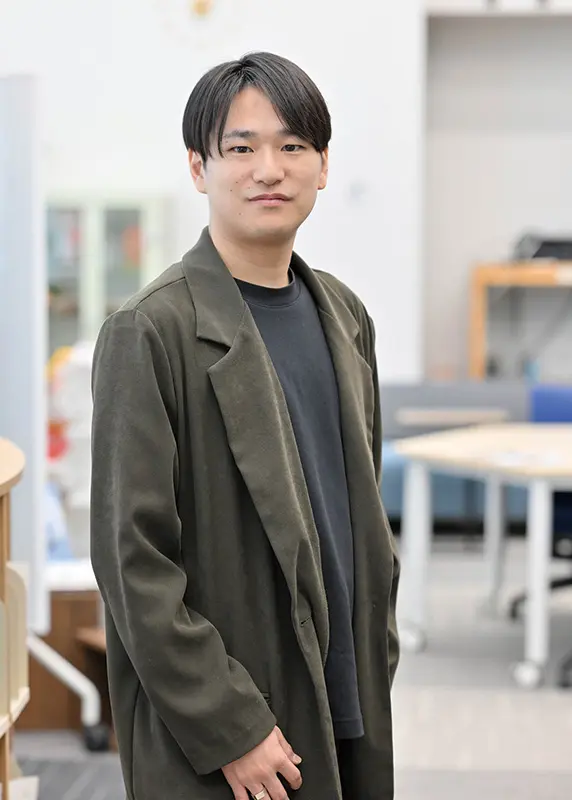Meet our scientists! 2024

Yukiko
Yoshida
Yukiko
Yoshida
On July 23, 2024, we lost our Chairman Keiji Tanaka to ischemic heart disease. Dr. Tanaka was a well-loved figure in the institute. He was a pioneer and leader in the field of protein degradation, contributing extensively to the identification, cloning, and characterization of the mammalian proteasome and the ubiquitination system that targets proteins for degradation. In addition, Dr. Tanaka nurtured and mentored many further successful scientists and led TMIMS for many years, first as director, and later as chairman. Among his many protégés, Yukiko Yoshida, continues his research legacy at TMIMS by studying ubiquitination and proteasomal degradation. One of Dr. Tanaka’s contributions to proteasome research was the identification of different types of proteasomes, including immunoproteasomes and thymoproteasomes, which are required for adaptive immunity. Likewise, there are many different ubiquitination pathways besides canonical ones, and Dr. Yoshida has been studying ubiquitination mechanisms that specifically recognize and target glycosylated proteins. While most ubiquitin-conjugating enzymes recognize protein substrates, Dr. Yoshida has identified a ubiquitin ligase complex, SCFFBS2, that recognizes the sugar chains of glycosylated proteins. Further, while most proteins are modified by ubiquitination of free amino groups on proteins, Dr. Yoshida determined that SCFFBS2 can ubiquitinate a substrate glycoprotein, Nrf1, on free hydroxyl groups in a non-canonical manner. Nrf1 is important in the expression of proteasomal genes and Dr. Yoshida has shown that inactivation of Nrf1 by her identified ubiquitination pathway is responsible for symptoms of a rare genetic disorder, NGLY1 deficiency. She recently published this work (Molecular Cell 84, 3115-3127, August 22, 2024). We spoke to her about her work.

Tadayuki
Shimada
Tadayuki
Shimada
Anxiety and depression affect hundreds of millions of people worldwide, and these numbers increased significantly during the covid pandemic. Anxiety and depression are associated with stress, and decreased branching and complexity of neurons in various brain regions. However, the precise molecular pathways causing these disorders are not known. Takayuki Shimada and colleagues in the Child Brain Project at TMIMS recently elucidated a novel pathway through which stress induces these disorders and published this work in the October 9th, 2024 issue of the Journal of Neuroscience (44(41):e0129232024). They determined that stress reduces expression of an extracellular signaling molecule, neuritin. Neuritin, stabilizes the cell surface expression of the fibroblast growth factor (FGF) receptor, and FGF signaling controls axonal branching of serotonergic neurons in several brain regions. Thus, decreases in neuritin expression cause reductions in axonal branching of serotonergic neurons resulting in anxiety and depression. This work clarifies our understanding of the causes of anxiety and depressive disorders and paves the way for the development of new treatments. We spoke to Dr. Shimada about this work and his interest in science.

Yuta
Otobe
Yuta
Otobe
We know intuitively that we have internal circadian clocks by our tendency to wake up in the mornings and go to sleep at night. This tendency continues even when we are in constant darkness where we shouldn’t be able to tell whether it is day or night. But circadian clocks control many more behaviors than just sleep patterns. Clocks are found in plants, animals, and bacteria, and they govern almost all aspects of biology. The most important and intriguing characteristic of clocks is their oscillation. While we understand the physics behind oscillations of pendulums and springs, biological processes tend to approach a state of equilibrium where they become stable and don’t oscillate. So, the study of biological clocks is important for biological and medical reasons, but also simply as a fascinating intellectual mechanism to understand. Currently, we’ve identified some aspects of circadian clocks. Two transcription factors, CLOCK and BMAL1, work together and bind to DNA sequences called E-boxes to activate transcription of genes, including PER and CRY. PER and CRY then inhibit CLOCK and BMAL1 activity, creating a rhythmic oscillation that is thought to be a core clock mechanism. However, this model is too simple and many questions still remain. Yuta Otobe and colleagues in the Circadian Clock Project at TMIMS are working on completely elucidating circadian clock mechanisms. Recently they found that phosphorylation affects DNA binding and PER-dependent inhibition of CLOCK and BMAL1 to regulate the function and frequency of the circadian clock (PNAS (2024), 121:23, e2316858121). We spoke to Dr. Otobe about his work.
Interviewed by Jun Horiuch